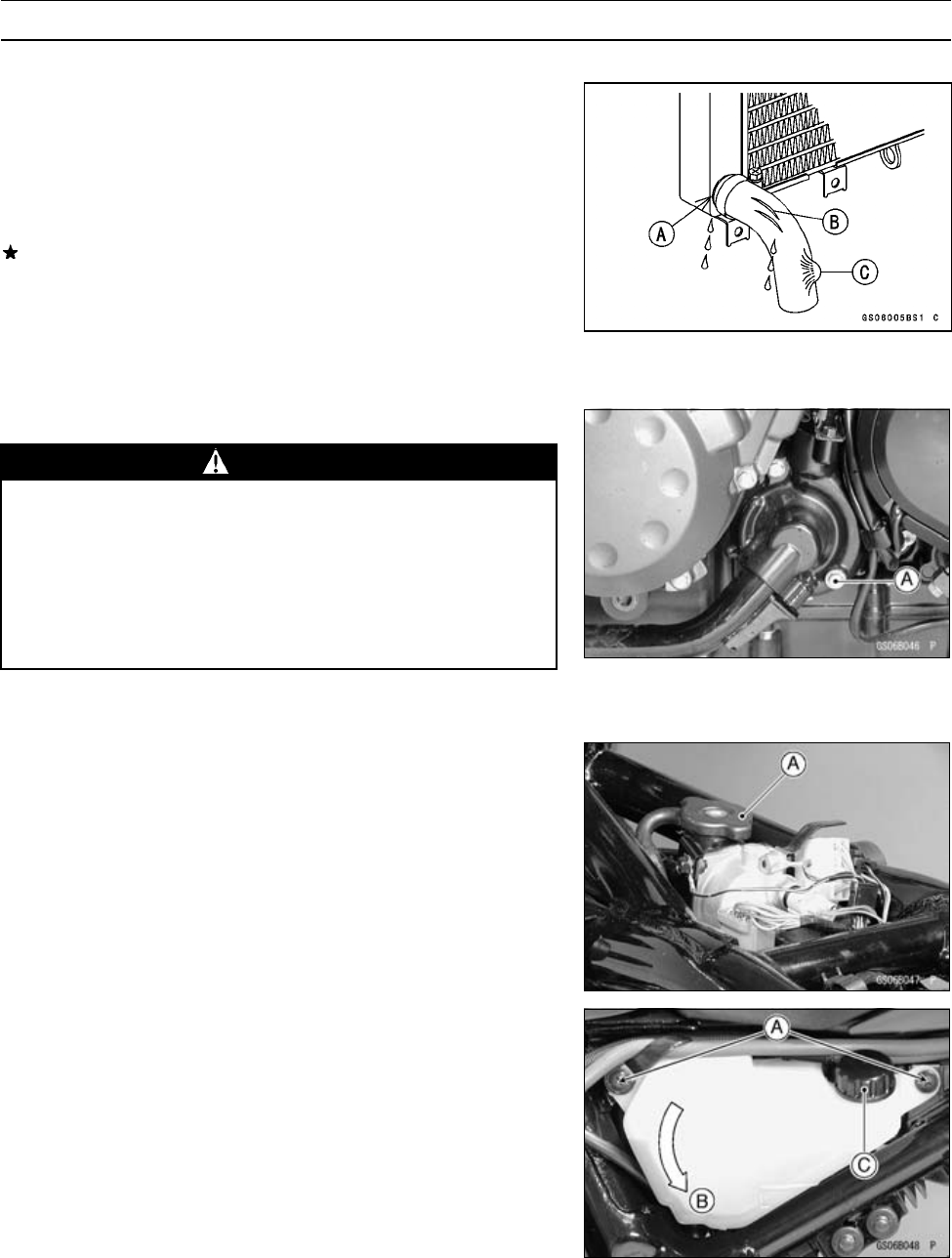
2-20 PERIODIC MAINTENANCE
Periodic Maintenance Procedures
Cooling System
Radiator Hose and Connection Inspection
○
The high pressure inside the radiator hose can cause
coolant to leak [A] or the hose to burst if the line is not
properly maintained. Visually inspect the hoses for signs
of deterioration. Squeeze the hoses. A hose should not
be hard and brittle, nor should it be soft or swollen.
Replace the hose if any fraying, cracks [B] or bulges [C]
are noticed.
•
Check that the hoses are securely connected and clamps
are tightened correctly.
Torque - Radiator Hose Clamp Screws: 2.0 N·m (0.20 kgf·m,
17 in·lb)
Coolant Change
WARNING
To avoid burns, do not remove the radiator cap or
try to change the coolant when the engine is still
hot. Wait until it cools down.
Coolant on tires will make them slippery and can
cause an accident and injury.
Since coolant is harmful to the human body, do not
use for drinking.
•
Place a container under the water pump drain bolt [A],
then remove the drain bolt.
•
Remove the fuel tank (see Fuel System (DFI) chapter).
•
Remove the radiator cap [ A] in two steps. First turn the
cap counterclockwise to the first stop. Then push and turn
it further in the same direction and remove the cap.
○
The coolant will drain from the radiator and engine.
•
Remove :
Left Side Cover (see Frame chapter)
Reserve Tank Screws [A]
•
Turn over [B] the reserve tank, remove the cap [C], and
pour the coolant into a suitable container.
•
Install the reserve tank.
Torque - Coolant Reserve Tank Screws: 7.0 N·m ( 0.70
kgf·m, 61 in·lb)
•
Tighten the drain bolt with the gasket.
○
Replace the drain bolt gasket with a new one.
Torque - Water Pump Drain Bolt: 11 N·m (1.1 kgf·m, 95 in·lb)


















